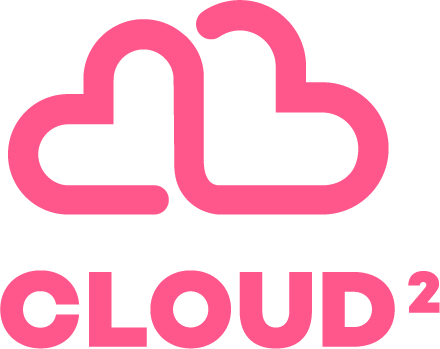Definition of AInsanity
Allegedly Einstein stated that the definition of insanity is:
“doing the same thing over and over again and expecting different results”
I feel we are repeating the sins of yesterday, making mistakes we should have learned to avoid decades ago.
It’s 2005 and I made a website, now I am aboard the digitalization bandwagon choochoo!
In 2015, companies ripped out their Exchange boxes, moved to Office 365, and bragged about a ‘cloud leap.’
In 2025, they are bying ChatGPT seats for staff and are circlejerk over an ’AI productivity leap.’”
Crass? Sure. But from a CTO’s chair there’s truth in the sting. Both the cloud leap and the AI leap are labels executives love to pin on themselves, often before the real work even starts.
A decade ago, the cloud journey began by moving email to Microsoft or Google.
Today, the AI journey often begins by granting everyone access to ChatGPT.
In both eras, the transformation people boost about is usually the preface, not the playbook itself.
2015’s “cloud leap”: big talk, small step
Back in 2015, many firms declared victory:
“We’re in the cloud.”
In practice, that meant retiring on-prem Exchange and adopting Office 365 or Google’s suite. In Finland and across Europe, surveys at the time showed rapid adoption of cloud email, some studies even put large-enterprise cloud email penetration around the three-quarters mark. CEOs patted themselves on the back. Cloud leap achieved.
Except it wasn’t.
Email still behaved like email, it just ran in Microsoft’s or Google’s data centers instead of your basement. The headline benefits (lower ops toil, better remote access) were real, but nothing about the business itself had yet changed.
The sweeping promises of cloud: cost elasticity, developer velocity, better reliability, increased security, faster time to market, only materialized when companies moved beyond “lift-and-shift.”
Analysts warned early that forklift-moving old systems into someone else’s rack rarely delivers cloud’s upside.
In some cases, it makes architecture more complex and more expensive. The real gains came later, when organizations re-designed applications to be cloud-native, modernized data and analytics, re-skilled teams, and tapped platform services-autoscaling, managed databases, data lakes, even early pre-LLM AI services.
Those who treated cloud as a strategy, not a mailbox migration, got faster release cycles, better quality, lower unit costs, and sometimes entirely new lines of business. Those who just moved legacy as-is discovered the productivity curve didn’t jump much at all.
2025’s “AI leap”: history rhymes
Fast-forward to 2025 and the pattern is familiar.
Strategy off-sites and conference keynotes echo with “We’ve taken the AI leap.”
Translation: we bought enterprise ChatGPT, maybe stood up a couple of bots, and declared a new era of productivity.
The procurement is loud; the process change is quiet. Make no mistake: generative AI is spreading faster and more visibly than cloud email ever did.
Industry reports suggest a big share of companies now use GenAI in at least one function, and employee experimentation is widespread.
Stanford’s AI Index notes a sharp rise in organizational adoption between 2023 and 2024. That urgency, fear of being left behind, is pushing purchases at record speed. And there are encouraging early results.
A well-known Stanford–MIT field study in a large contact center found that giving agents an AI assistant lifted productivity by roughly 14% (tickets resolved per hour).
Another MIT study showed office workers completing certain writing tasks about 40% faster with AI help, with outside raters scoring the output quality higher as well.
Any leader would raise an eyebrow at numbers like that. But dig deeper. Most of these wins are still assistive and local: one person completes one task faster or better.
That’s valuable, but it’s not a company-wide productivity transformation.
Many current GenAI use cases live as smart add-ons to yesterday’s workflows. That’s the AI equivalent of 2015’s email migration: useful, popular, and… only the beginning.
There’s also a familiar whiff of self-congratulation. Some firms proudly report tens of thousands of prompts a month, as if the raw count proved value. Meanwhile, relatively few have serious guardrails, training, or governance in place; surveys suggest that fewer than a quarter of organizations had mature, written GenAI usage guidelines even as adoption surged. The procurement theater arrives first. Integration comes later.
The real leap is still ahead
Cloud’s history hands us a playbook for AI. Lesson one: adopting the tool is not the transformation. The returns show up when you change the work.
Redesign the process, not just the steps. Speeding up yesterday’s workflow with AI is like putting an electric motor on a horse cart—faster, yes, but nowhere near the potential. In customer service, for instance, the goal isn’t just drafting replies faster; it’s a tiered model where AI handles the routine end-to-end, humans focus on exceptions, and learning loops continually improve both. The lift-and-shift mindset didn’t unlock cloud; it won’t unlock AI either.
Skill the organization and evolve roles. In the cloud era, ops teams learned platform thinking; developers learned services, not servers. In the AI era, everyone needs working AI literacy: giving good instructions, verifying and editing AI output, knowing when not to trust it. New roles emerge too—AI product owners, data stewards, AI risk and ethics leads. Culture, training, and change management are not “nice to haves”; they’re the multiplier.
Lead with strategy, not demos. In cloud, performance gaps widened when some firms made it the backbone of their operating model while others treated it as a cost-saving project. AI will be even more polarizing. High performers are already reporting material portions of EBIT tied to AI-enabled products and processes. That comes from a portfolio view: where AI shifts our economics, where it differentiates the product, how we govern it, and in what order we invest.
Build a flywheel of learning. The tech is compounding fast. The winners won’t run one AI project; they’ll run dozens, measure impact tightly, and scale what works. That’s how cloud modernization finally paid off—iterative, measurable modernization beats one big-bang migration. Treat AI the same way: short pilots, clear metrics, quick iteration, structured rollout.
From hype to habit
Both the cloud leap and the AI leap expose a human truth about tech adoption: we overestimate the short-term change and underestimate the long-term upheaval.
In 2015, many thought the cloud job was done at email cutover; years later, the real benefits accrued to those who kept going, refactoring, re-platforming, rebuilding data and ways of working.
In 2025, we may be chest-beating about an AI leap when, in reality, we’ve taken the first steps. And that’s fine, every journey needs a first step. The cloud journey started with mail. The AI journey may start with ChatGPT.
Both are valuable beginnings. The problem is pretending the beginning is the destination.
The leadership task now is to turn early excitement into sustained execution. With a wink of irony: it’s time to stop the performative “circle-jerk” around the tool and start the unglamorous work of changing how value is created.
AI’s real payoff arrives when it becomes an everyday layer across products, processes, and decisions, visible and yet almost invisible, like electricity. Getting there means weaving technology, people, and processes together on purpose.
Ten years after the first cloud press releases, cloud has reshaped business more than we dared hope.
By 2035, we may look back at today’s AI hoopla with a smile: those “leaps” were really small hops that started something far bigger. To make that future real, remember: hype is easy; change is hard, and worth it. The main climb of the AI leap still lies ahead. The companies that prepare ambitiously, and humbly, will win the next decade.



